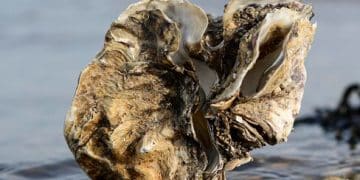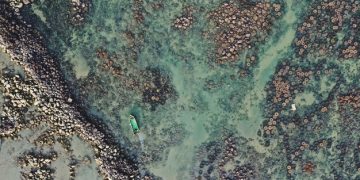Ocean Acidification’s Long-Term Impact on US Shellfish
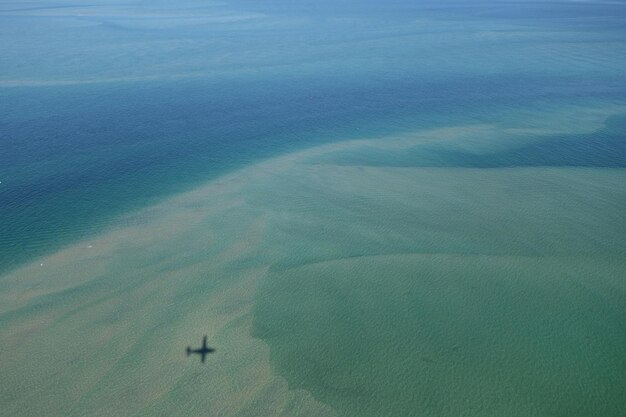
The long-term effects of ocean acidification on shellfish populations in the US are profound, leading to compromised shell formation, reduced growth rates, reproductive failures, and significant ecological and economic disruptions across vital coastal ecosystems and industries.
Diving into the very essence of our marine ecosystems, understanding what are the long-term effects of ocean acidification on shellfish populations in the US? becomes critically important. This escalating environmental challenge, though often unseen, silently reshapes the delicate balance of life beneath the waves, particularly impacting species that form the bedrock of both ecological health and significant economic sectors across the United States.
The Unseen Chemistry: Understanding Ocean Acidification
Ocean acidification, often dubbed climate change’s “evil twin,” is a direct consequence of the ocean absorbing excess carbon dioxide (CO2) from the atmosphere. This CO2 reacts with seawater, forming carbonic acid, which subsequently lowers the ocean’s pH – making it more acidic. This seemingly minor shift in pH has profound implications, especially for marine calcifiers.
The process is straightforward yet devastating: as the ocean becomes more acidic, the concentration of carbonate ions, vital building blocks for shells and skeletons, decreases. This reduction in available carbonate ions makes it significantly more challenging for many marine organisms, particularly shellfish, to build and maintain their protective structures. It’s a fundamental chemical alteration that ripples through the entire marine food web.
The chemistry of CO2 absorption
When atmospheric carbon dioxide dissolves in seawater, it undergoes a series of chemical reactions:
- 💨 CO2 + H2O ⇌ H2CO3 (carbonic acid)
- 🧪 H2CO3 ⇌ H+ + HCO3- (bicarbonate)
- 🌊 HCO3- ⇌ H+ + CO32- (carbonate)
The increase in hydrogen ions (H+) is what causes the ocean to become more acidic, lowering the pH. Simultaneously, the increased H+ ions combine with carbonate ions (CO32-), reducing their availability. This deficit of carbonate ions is precisely what poses such a critical threat to shellfish.
While the pH change might seem small on a logarithmic scale, a drop of 0.1 pH unit means a 30% increase in acidity. Since the industrial revolution, ocean pH has dropped by approximately 0.1 units, an unprecedented rate over geologic time scales. This rapid change outpaces the adaptive capacity of many marine species, making the long-term outlook particularly concerning.
The implications of this altered chemistry extend beyond shell formation, influencing physiological processes like respiration, metabolism, and even behavior in sensitive species. Understanding this foundational chemical shift is crucial to grasping the comprehensive challenges facing US shellfish populations.
Direct Impacts on Shell Formation and Growth
The most immediate and discernible long-term effect of ocean acidification on shellfish populations stems from its direct interference with calcification, the biological process by which marine organisms form calcium carbonate structures. For shelled organisms like oysters, clams, mussels, and scallops, this process is fundamental to their survival and development.
As the ocean’s pH drops and carbonate availability diminishes, shellfish must expend significantly more energy to extract and utilize the necessary ions for shell construction. This increased energetic cost can lead to thinner, weaker, and more brittle shells, making them more vulnerable to predation and environmental stressors. In some severe cases, shells may even begin to dissolve.
Larval stage vulnerabilities
The larval stages of shellfish are particularly susceptible to acidified waters. These microscopic larvae, often barely visible to the naked eye, rely heavily on rapid calcification to form their initial shells. If the water chemistry is unfavorable, they may struggle to form shells at all, or the shells they do form are compromised from the outset.
This early vulnerability has cascading effects:
- 📉 Reduced survival rates: Larvae are unable to develop properly or withstand the harsh marine environment.
- 🐌 Slower development: Those that do survive may grow at a much slower pace, delaying their transition tojuvenile stages.
- Weakened adult populations: A compromised larval stage can lead to fewer recruits into the adult population, potentially driving long-term population declines.
Research from institutions along the US West Coast, a region significantly impacted by upwelling of acidic waters, has consistently shown dramatic declines in oyster larvae survival when exposed to conditions mirroring current or projected ocean acidification levels. This specific impact on the youngest life stages is a critical bottleneck for shellfish population recovery and maintenance.
Beyond the larval stage, juvenile and adult shellfish also face challenges. While their shells are more robust, they still require energy for ongoing shell maintenance and growth. This constant energetic drain can divert resources away from other crucial physiological processes, impacting overall health, resilience, and reproductive capacity over their lifespan.
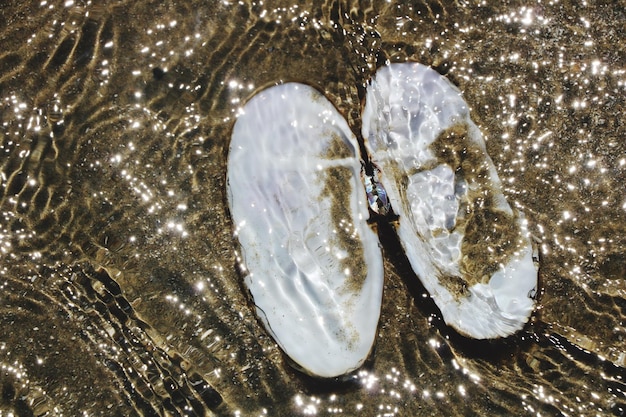
Reproductive Failures and Population Dynamics
Beyond direct shell impacts, ocean acidification significantly impairs the reproductive success of shellfish, leading to broader disruptions in population dynamics. The long-term viability of shellfish populations hinges on successful reproduction, including gamete production, fertilization, larval development, and recruitment into adult populations. Acidification interferes with multiple points along this sensitive pathway.
For many shellfish species, the process of spawning and fertilization is pH-sensitive. Studies have shown that lower pH levels can reduce sperm motility and viability, impeding successful fertilization. Even if fertilization occurs, the subsequent embryonic development can be hindered, leading to malformations or complete developmental arrest.
Impacts on gamete production and fertilization
The subtle shifts in ocean chemistry can disrupt the internal physiological processes responsible for producing healthy gametes (sperm and eggs). Shellfish, like many marine invertebrates, release their gametes directly into the water for external fertilization. The chemical environment of the water thus plays a critical role in the chances of successful fertilization.
Consequences include:
- 📉 Lower fertilization rates: Reduced sperm viability or altered egg receptivity in acidified conditions.
- 🦠 Abnormal embryonic development: Even if fertilized, embryos may struggle to develop normally, leading to higher mortality rates.
- 🐌 Delayed maturation: Larvae that do survive may take longer to reach metamorphosis, increasing their exposure to predation.
These disruptions at the earliest stages of life contribute directly to a reduced number of new individuals joining the population—a process known as recruitment. A consistent decline in recruitment over several breeding cycles can quickly lead to overall population decline, sometimes to the point where recovery becomes exceedingly difficult without intervention.
Monitoring shellfish populations in estuaries and coastal waters of the Northeast and Pacific Northwest has revealed troubling trends, with some commercially important species showing significant recruitment failures directly linked to episodic or chronic acidification events. This makes it evident that the problem is not a future concern but a current ecological reality affecting US coastal regions.
Cumulative stress is another factor. Shellfish already cope with stresses like pollution, habitat loss, and disease. Ocean acidification adds another layer of pressure, potentially pushing populations beyond their tipping points and making them less resilient to other environmental changes. This multi-stressor environment exacerbates the long-term challenges for these vital marine species.
Ecological Cascades and Food Web Disruption
The decline of shellfish populations due to ocean acidification doesn’t occur in isolation; it triggers a cascade of ecological impacts that can profoundly alter marine food webs and ecosystem functioning. Shellfish are not merely commercial commodities; they are keystone species in many coastal ecosystems, playing critical roles as filter feeders, habitat providers, and primary food sources.
As filter feeders, oysters, mussels, and clams significantly contribute to water clarity and quality by removing particulate matter, including excess algae. A reduction in their numbers can lead to murkier waters, potentially affecting photosynthetic organisms like seagrasses that require clear water for light absorption. This, in turn, impacts diverse communities that rely on these underwater meadows for shelter and food.
Impact on predators and ecosystem services
Moreover, shellfish serve as a fundamental food source for a vast array of marine organisms, from crabs and sea stars to fish and marine birds. A decline in shellfish availability can force these predators to seek alternative food sources, potentially increasing predation pressure on other susceptible species or, worse, leading to starvation and declines in predator populations.
Consider the interconnectedness:
- 🦀🦀 Predators affected: Crabs, sea stars, and various fish species rely heavily on shellfish. Their decline could lead to food scarcity for these consumers.
- 🌊 Ecosystem engineers: Oyster reefs, for instance, provide complex habitats that support biodiversity, protect coastlines from erosion, and act as natural water filters. Their degradation means a loss of these vital ecosystem services.
- 🐠 Broader food web effects: Disruptions at one trophic level can ripple up and down the food web, leading to imbalances and potentially less resilient ecosystems.
The impact of ocean acidification on shellfish populations, therefore, extends far beyond the individual organism or species. It threatens the structural integrity and functionality of entire coastal ecosystems. The East Coast of the US, with its extensive oyster and clam beds, provides numerous examples where these ecological services are under threat, highlighting the urgent need for mitigation and adaptation strategies.
The long-term consequence is a simplification of marine ecosystems, where biodiversity is reduced, and the resilience of the system to other disturbances, such as pollution events or disease outbreaks, is severely compromised. This leads to less stable and productive coastal environments, impacting both natural processes and human livelihoods that depend on healthy oceans.
Economic Ramifications for US Coastal Communities
The long-term effects of ocean acidification on shellfish populations translate directly into significant economic losses for coastal communities across the United States. The commercial shellfish industry—including oysters, clams, mussels, and scallops—is a multi-billion-dollar enterprise, providing jobs, food security, and a cornerstone of local economies from the Pacific Northwest to the Gulf of Mexico and the Northeast.
When shellfish populations decline, or their quality is compromised, it directly impacts harvesters, aquaculture farmers, processors, distributors, and related tourism industries. The ripple effect can be devastating, leading to reduced harvests, lower market value, business closures, and job losses.
Aquaculture and wild fisheries at risk
Both wild capture fisheries and aquaculture (farming) operations are highly vulnerable. Aquaculture, in particular, which relies on consistent production of shellfish larvae and juveniles, is at the forefront of impacts.
- 💰 Aquaculture losses: Hatcheries report difficulty growing larvae, leading to substantial financial losses and increased operational costs.
- 🎣 Wild fishery declines: Reduced recruitment means fewer adult shellfish for wild harvesting, impacting independent fishermen and large fishing companies.
- 📉 Market instability: Supply shortages can drive up prices, making shellfish less accessible to consumers and potentially altering market demand.
The Pacific Northwest oyster industry has already experienced this firsthand, with severe larval die-offs in hatcheries directly linked to corrosive upwelled waters. This forced many operators to implement costly mitigation strategies, such as buffering their water with chemicals, or to move their larvae production to less affected areas. These adaptive measures, while necessary, come at a significant financial burden.
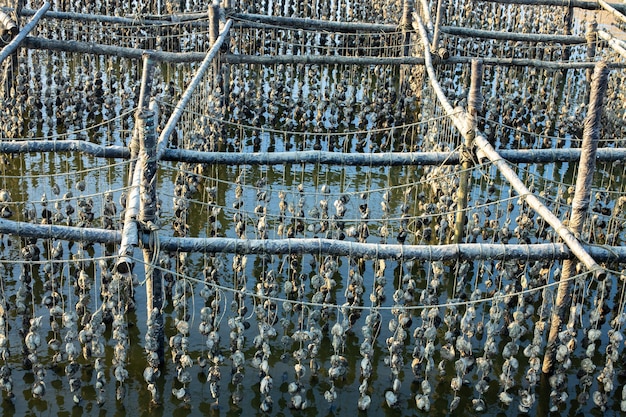
Beyond the direct economic hits, there are also subtler, yet equally damaging, long-term effects. The cultural heritage associated with shellfish harvesting in many coastal towns is at risk. Generations of families have depended on these resources, and their loss can erode community identity and resilience. Tourism, often built around fresh seafood and coastal experiences, may also suffer as local delicacies become scarcer or more expensive.
Furthermore, the increased uncertainty surrounding shellfish production can deter investment in the industry, hindering innovation and growth. This creates a challenging economic environment that directly threatens the livelihood of thousands of Americans and the economic vitality of entire coastal regions.
Mitigation Strategies and Adaptation Measures
Addressing the long-term effects of ocean acidification on US shellfish populations requires a two-pronged approach: global mitigation of carbon emissions and local adaptation strategies. While reducing global CO2 emissions is paramount to slowing and eventually reversing ocean acidification, local actions can help buffer immediate impacts and enhance the resilience of shellfish populations and industries.
Globally, the most effective mitigation strategy is to drastically cut greenhouse gas emissions. This involves transitioning to renewable energy sources, improving energy efficiency, and implementing carbon capture technologies. International agreements and national policies are crucial for achieving these large-scale reductions.
Technological and biological adaptations
Locally, a variety of adaptation measures are being explored and implemented:
- 🧪 Water chemistry manipulation: Hatcheries are increasingly filtering and buffering incoming seawater to protect vulnerable larvae, though this is costly.
- 🧬 Selective breeding: Researchers are identifying and breeding shellfish strains that are more tolerant to acidic conditions, aiming to enhance resilience over generations.
- 🌱 Habitat restoration: Restoring coastal habitats like seagrass beds and oyster reefs can locally improve water quality and provide refugia.
For instance, some shellfish farms in the Pacific Northwest are now using sophisticated sensor systems to monitor ocean chemistry in real-time. This allows them to precisely time the introduction of larvae into the water when conditions are most favorable, or to quickly adjust water chemistry within their hatchery systems. These “smart aquaculture” approaches represent critical steps in adapting to changing ocean conditions.
Beyond technological fixes, policy and management responses are also critical. Protecting coastal wetlands and estuaries, which can naturally filter water and sequester carbon, offers a “nature-based solution.” Developing early warning systems and robust monitoring networks allows businesses and managers to anticipate and respond to acidification events more effectively.
Investing in scientific research to understand the complex ecological and physiological responses of shellfish to acidification is also vital. This knowledge can inform better management practices and the development of new, more resilient aquaculture techniques. The collective effort across science, industry, and policy is essential to safeguard these invaluable marine resources for future generations.
Future Projections and The Path Forward
The long-term trajectory of ocean acidification in the US, and its impacts on shellfish, is directly linked to future global carbon dioxide emissions. Without significant reductions in CO2, the ocean’s pH will continue to drop, exacerbating the challenges faced by shellfish populations and potentially leading to more widespread ecological and economic ramifications.
Projections indicate that by the end of the century, ocean pH could drop by an additional 0.3-0.4 units, representing a further 100-150% increase in acidity relative to pre-industrial levels. Such conditions would make it increasingly difficult for many shellfish species to survive and thrive, particularly in regions already experiencing severe impacts, such as the Northeast and Pacific Northwest.
Scientists anticipate that some species may be able to adapt over many generations, but the rapid pace of change outstrips the evolutionary capacity of many long-lived organisms. This means that while some resilience might emerge, widespread extinctions or functional extirpations of certain shellfish types remain a considerable long-term risk.
Urgent action and collaborative efforts
The path forward requires urgent and sustained action on multiple fronts:
- 🌍 Global emissions reductions: This is the foundational solution––reducing CO2 at the source is indispensable.
- 🔬 Continued research: Understanding the nuances of impacts and developing resilient aquaculture practices.
- 🤝 Policy and international cooperation: Implementing effective conservation and management strategies across jurisdictions.
The long-term health of US shellfish populations, and the vibrant coastal economies and ecosystems they support, depends on a global commitment to addressing climate change and a concerted effort at local and regional levels to develop and implement effective adaptation strategies. Ignoring these projections is not an option; the ecological and economic stakes are too high. It is a shared responsibility to ensure that these indispensable marine creatures continue to enrich our oceans and our lives for generations to come.
| Key Aspect | Brief Description |
|---|---|
| 🐚 Shell Formation & Growth | Acidification makes shell-building harder, leading to thinner shells and hindered growth, especially in larvae. |
| 🐠 Ecosystem Impacts | Declining shellfish disrupt food webs and vital ecosystem services like water filtration and habitat creation. |
| 💰 Economic Consequences | Significant losses for US aquaculture and wild fisheries, impacting coastal economies and jobs. |
| 🛠️ Mitigation & Adaptation | Requires global CO2 reduction and local strategies like selective breeding and water treatment in hatcheries. |
Frequently Asked Questions
▼
Ocean acidification primarily occurs when the ocean absorbs excess carbon dioxide (CO2) from the atmosphere, largely due to human activities like burning fossil fuels. This CO2 reacts with seawater, forming carbonic acid, which lowers the ocean’s pH and reduces the availability of carbonate ions critical for shell formation.
▼
Oysters, clams, mussels, and scallops are among the most vulnerable US shellfish species. Their susceptibility stems from their reliance on calcium carbonate to build and maintain their shells, a process significantly hindered by increasingly acidic waters, especially during their delicate larval stages.
▼
Ocean acidification can impair shellfish reproduction by reducing sperm motility and viability, hindering fertilization, and causing abnormal embryonic or larval development. These effects lead to lower recruitment rates, meaning fewer new individuals are successfully joining the adult population, threatening long-term population stability.
▼
The economic impacts are substantial, affecting the multi-billion-dollar shellfish industry. Declining populations lead to reduced harvests, increased operational costs for aquaculture, business closures, and job losses for harvesters, farmers, and related sectors, contributing to instability in coastal economies.
▼
Mitigation requires global reductions in carbon emissions. Locally, strategies include water chemistry manipulation in hatcheries, selective breeding for more resilient shellfish strains, and coastal habitat restoration. Continued scientific research and policy development are crucial for effective long-term adaptation and protection of these vital resources.
Conclusion
The long-term effects of ocean acidification on US shellfish populations are a multifaceted crisis, impacting not only the biological integrity of these organisms but also the intricate ecological webs and vital coastal economies they support. From compromised shell formation and reproductive failures to cascading food web disruptions, the consequences are profound and far-reaching. Addressing this silent threat demands a dual approach: a global commitment to drastically reducing carbon emissions and ongoing, localized adaptation efforts. The resilience of our oceans and the livelihoods of countless Americans depend on our collective ability to understand, mitigate, and adapt to the changing chemistry of our seas, ensuring that the critical roles played by shellfish continue for generations to come.

